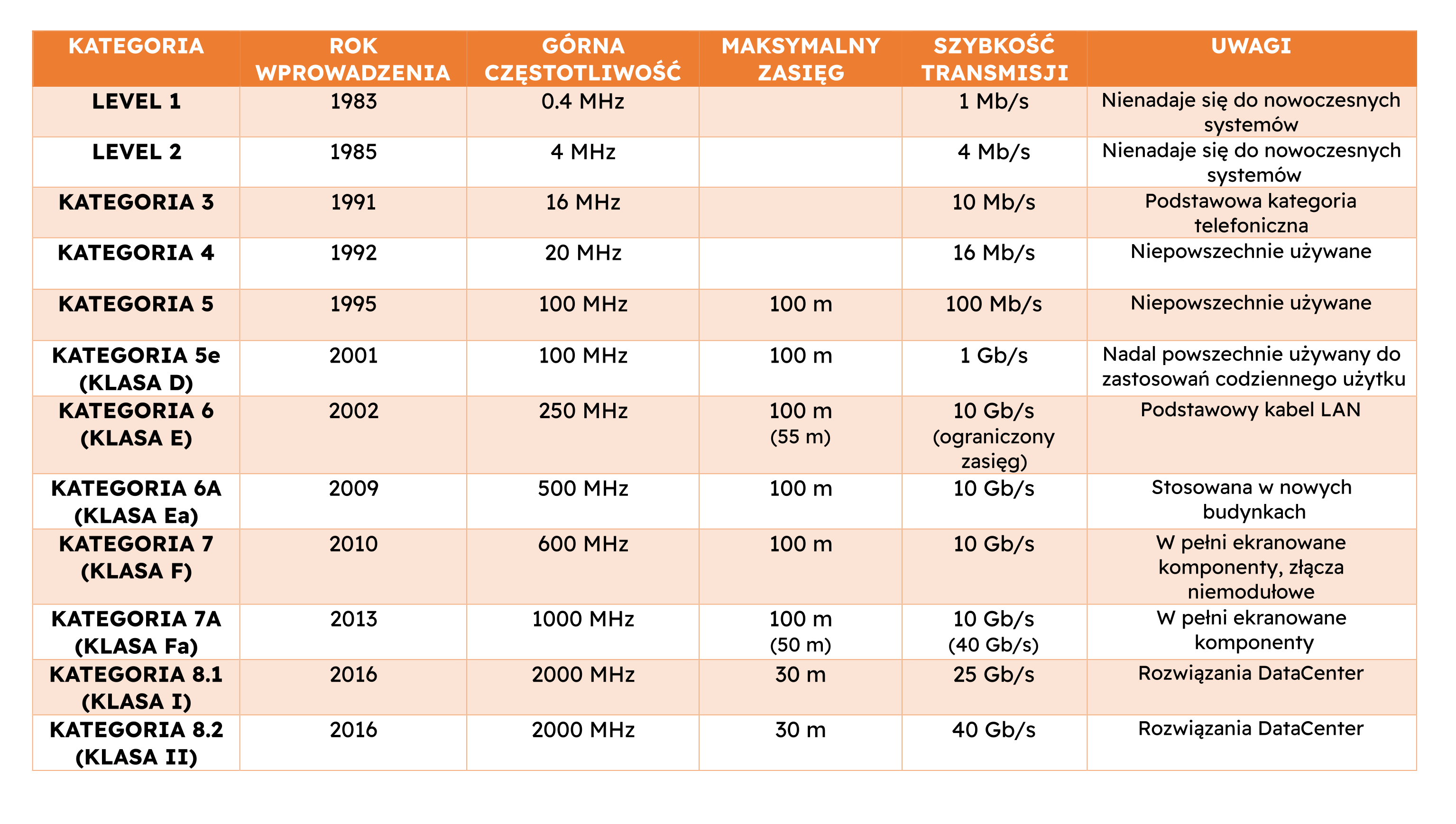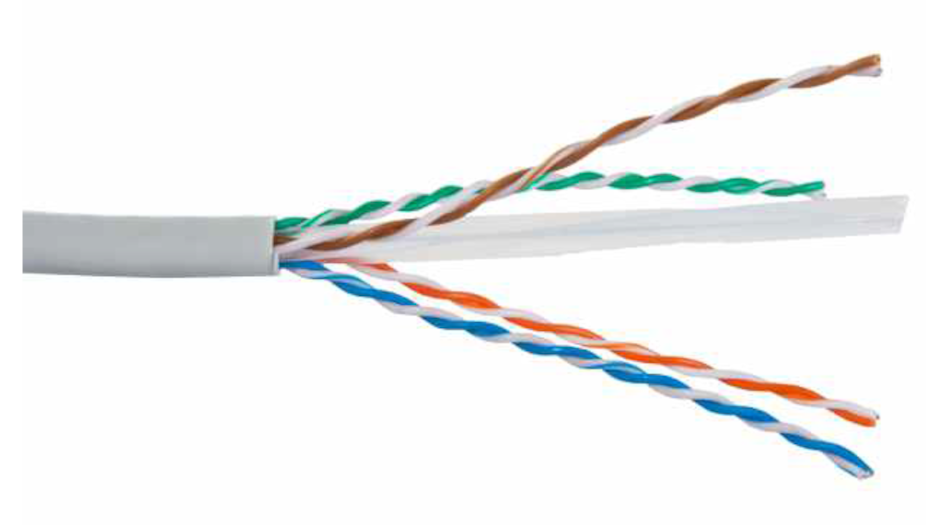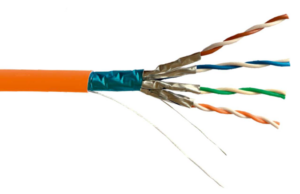

Data transmission history is closely tied to the development of cabling and connection equipment. Efficient, large data networks and Local Area Networks (LANs) cannot function properly without appropriate cables and connectors. When looking at high-speed networks like Gigabit and 10 Gigabit Ethernet, it’s hard to imagine that these evolved from telephone networks. LAN technologies have significantly evolved over the years, with Ethernet becoming the dominant technology in LAN networks.
Due to technological advancements and the increasing demand for higher network speeds, cables and components were developed to transmit more data over shorter periods and longer distances. Classes and categories for copper cabling were introduced to distinctly define limits for installed connection equipment and, most importantly, to define network parameters. For example, Category 3 was introduced in the late 1980s and could deliver voice services and 10BASE-T Ethernet. However, it became obsolete by the mid-1990s, as Category 5 became widely available and could support faster speeds of up to 100 Mbps. The next wave of cable and connector development came as Category 5e, which could support Gigabit network applications even more efficiently. Category 5e is an enhanced version of Category 5, with more stringent specifications for crosstalk between pairs, enabling more reliable Gigabit network applications and high data transfer scenarios.
Over the past 7-10 years, Category 6 cables and connectors have become the standard requirement for new buildings to support Gigabit network applications and bandwidths up to 250 MHz. Category 6 is also beginning to replace Category 5e in residential environments. Category 6A, which supports data transfer speeds from 10G up to 100 meters and bandwidth up to 500 MHz, has started gaining popularity. Many data centers, hospitals, and universities have adopted Category 6A as the new minimum requirement. Further changes are ongoing with Category 7, Category 7A, and Category 8, which will support even higher data transfer speeds and bandwidth.


Category 6 cabling offers numerous advantages over Category 5e infrastructure. When first introduced, Category 6 was about 50% more expensive than Category 5e, making the cost prohibitive for many installations. However, Category 6 costs have significantly decreased over the years, bringing the price close to that of Category 5e. Category 6 provides higher bandwidth compared to Category 5e and allows for faster data transfer speeds. Consequently, Category 6 has become the minimum standard for new cabling installations. In addition to easily supporting 1 Gb/s network speeds, Category 6 can also support data transfer speeds of up to 10 Gb/s, though only over shorter distances of 37-55 meters.

Category 6A can support data transfer rates of up to 10 Gb/s with a maximum bandwidth of 500 MHz. Category 6A features additional and tighter pair twists, with extra insulation to reduce crosstalk. Category 6A is also backward-compatible with Category 6 and 5e, but speeds are always limited to the lowest category cable or connector installed in the link. Category 6A is quickly becoming the most cost-effective solution, as it is viewed as a future-proof cabling system. Category 6A components are used in Class Ea networks as defined in ISO/IEC 11801 and TIA/EIA 568 standards.
One noticeable drawback of Category 6A is the cable’s physical size and weight. When first introduced in 2008, Category 6A was 50% larger. Since then, cable sizes have been reduced and slimmed down by 10%. The additional weight also reduces the number of cables that can fit into cable trays and ducts. This calls for larger cable trays, conduits, and smaller bundle sizes. Additional space is also needed for cable bend radii in cable trays, patch panels, and behind wall outlets.
Termination methods and times were also seen as negatives for Category 6A installations, but new modular jacks and outlets, which can be terminated in about 2-3 minutes, have reduced installation time and costs.
One of the primary arguments for installing Category 6A infrastructure now is future-proofing the network. Therefore, if the planned lifespan of the new cabling system is five or more years, Category 6A should be considered. If the planned network lifespan is at least ten years, Category 6A is the strongly preferred solution.
When considering the use of Category 6A components in a Class Ea 10 Gb/s network, the following factors should be considered:
End-users can choose between shielded and unshielded solutions. Shielded Category 6A cable generally has an external foil shield around each pair or all four copper pairs. Moreover, modules, outlets, and patch panels are also protected by a metal housing around these components. Each solution has its place and set of benefits.
Category 6A cable is available in various configurations. Shielded and unshielded cables are often referred to as F/UTP (shielded) and U/UTP (unshielded).
The first letters designate the type of overall shielding, and the last letters designate the type of screening on each pair.
Category 6A U/UTP means the cable consists of 4 unshielded twisted pairs with no overall screen. Category 6A F/UTP means the cable consists of 4 unshielded twisted pairs, but includes an overall foil screen. This is a shielded cable. Category 6A S/FTP (shielded/foiled twisted pair) cable is also available; this is typically a Category 7 cable which features four individually shielded pairs and an overall braid screen around all four pairs.
One of the newest additions to the Category 6A shielded cable range is the U/FTP cable. This cable configuration features all four pairs individually shielded, rather than an overall foil shield. The overall test results and performance of this cable are impressive.
Category 6A requires additional testing, but all network testers are pre-configured with PASS/FAIL requirements for the link and can quickly and effectively test network performance.
Alien Crosstalk (AXT) is electromagnetic noise that can occur in a cable running alongside one or more other signal-carrying cables. It begins at 350 MHz, so compared to Categories 6 and 5e, Category 6A requires additional testing.
How do you decide which structured cabling system to use? How do you choose between Category 6 and 6A?
The answers to these questions are simpler than they might seem.
First, what applications are currently in use? What future applications does your organization plan to adopt? What network growth do you expect in the next five years in terms of data transfer and user numbers? What is the expected lifespan of the building – 5, 10, 20, or even 25 years? Where are cabling standards heading? What is your budget or expected cost? What will the cost of reinstalling a new network be in the future?
While many factors must be considered, Category 6A is proving to be a wise choice due to its future-proof capabilities. Category 6A is available in shielded and unshielded versions, each with its place. It is also backward-compatible with Categories 6 and 5e, thanks to the continued use of the RJ45 connector. Category 6A provides a cost-effective solution for current and emerging applications, supporting higher bandwidths and 10 Gb/s network speeds up to 100 meters.
Moreover, Category 6A and structured cabling products can be utilized for applications beyond voice and data transmission. These include building automation, CCTV, access control, and many others. Therefore, the ability to integrate all these applications into a single cabling infrastructure presents another significant advantage.